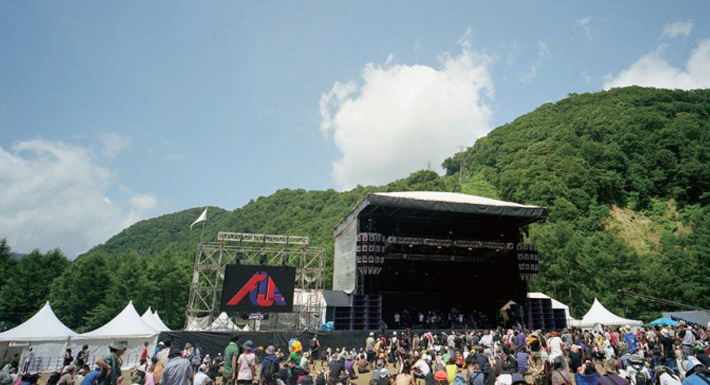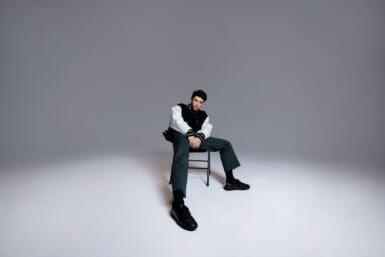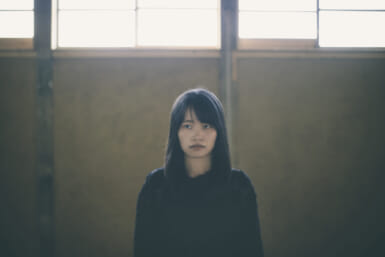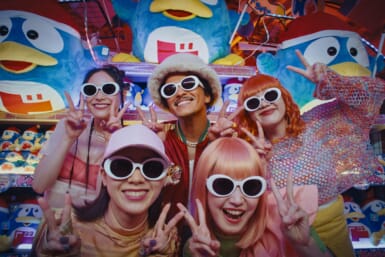by Nora Wohlfeil
When it comes to music, every genre has its magnetism. Whether it’s jazz, techno or rock, you will always find a passionate group of people that are more than eager to gather together, simply to live it up for the joy of music. Nowhere is this more true than at music festivals.
Music festivals tend to be a study in chaos. People start drinking at 11 in the morning or earlier, might eat nothing but canned or junk food for three days straight, and there is little to no chance of finding a clean toilet. If it starts to rain, a fight could break out with thousands of people, simply because everyone wants to open their umbrellas at the same time.
The campgrounds turn into a sea of tents, so those who are sensitive to snoring or other noises will want to think ahead and take earplugs. A festival is probably one of the most worthwhile and memorable experiences you can have. Sharing the same fervor with a crowd in which people are just centimeters away from you, singing along with the lyrics of a song by your favorite band while throwing your arms in the air, and being surrounded by others sharing the same enthusiasm puts the world at peace for a moment, and simply makes people happy. Ever since the legendary Woodstock festival of 1969, rock festivals have become more and more popular, until they now are a must among passionate rock fans. Since Woodstock first kicked off rock festival history, many others have emerged, now totaling several hundred worldwide.
Japan’s two major festivals are Fuji Rock and Summer Sonic. Over the years, both festivals have strengthened their position on the international scene, with tens of thousands of visitors each year and performances by music icons such as the Red Hot Chili Peppers, The Strokes, Björk, Coldplay and even James Brown. Offering performances by well known artists from across the world, the lineup at both events includes popular and up-and-coming Japanese talents, as well as international guests.
Inspired by the UK’s Glastonbury Festival (the world’s largest greenfield music and performing arts festival), Fuji Rock is held at Naeba Ski Resort, which is actually nowhere near Mt. Fuji, as the name at first seems to imply. However, the first festival, in 1997, was indeed located near Fuji-san, but it resulted in a total disaster when a typhoon struck the festival area. The second day was then cancelled, putting a quick end to Japan’s first outdoor rock festival. Ironically, the sun was shining the next day. From 1999 on, Fuji Rock has made its home amidst the mountains in Naeba.
But Mt. Fuji seems to be a popular location for this type of event. In 1970 expat Hal Sloane organized the Fuji Odyssey, which was supposed to be Japan’s answer to Woodstock, with headliners such as Joni Mitchell, Santana, Procol Harum, Janis Joplin, and Crosby, Stills, Nash & Young. Unfortunately, due to bad publicity surrounding Woodstock and other rockfests in the US, the festival’s backers pulled out and it was cancelled just days before it was to begin.
Fuji Odyssey though, initially planned to last ten days, is in no way related to the current Fuji Rock, which traditionally is held during the last weekend of July and lasts for three days. In 1999, 300 volunteers organized a rubbish clearing campaign, ensuring an unpolluted site and pristine facilities at the stunning location up until today. It is a music event with a difference. Considering the fact that festivals are normally a total camping chaos, with an average waiting time of an hour and a half to get a free shower, tens of thousands of visitors eating pre-packaged food and drinking hundreds of liters from plastic bottles, it is indeed quite an unexpected yet welcome twist for a festival to start a cleaning campaign. Leave it to the Japanese to be the initiators of something like this.
Celebrating its 18th anniversary this year, Summer Sonic doesn’t have to hide in the shadow of Fuji Rock: the festival kicked off in 2000 with the legendary James Brown. Concerts are held simultaneously in Tokyo and Osaka, with the majority of bands playing in Tokyo on the first day then Osaka the next, or vice versa. Set shortly after Fuji Rock, the festival is in early August.
While Fuji Rock seems to combine rock music with indie, electronic, and hip-hop beats, as well as inviting several old time favorites such as Patti Smith, Summer Sonic puts its focus on rock music, yet still provides the audience with several bands from the indie-electronic music scene. Although each festival gives off a different vibe, both are excellent in terms of quality and big-name performers. Fuji Rock has a total of 12 stages, whereas Summer Sonic has only half that number, but also features a dance stage, a casino, and massage booths.










